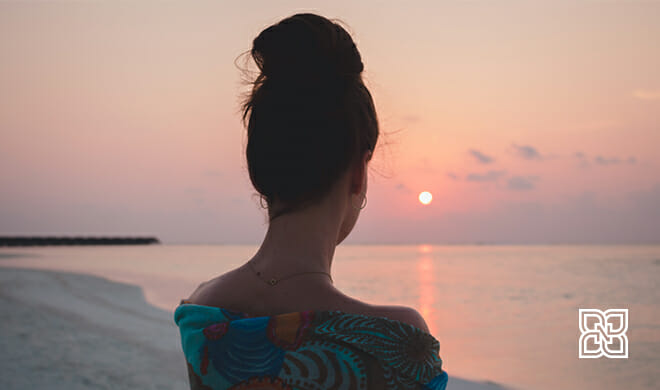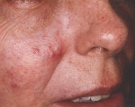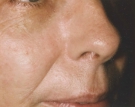Rosacea

What is rosacea?
Rosacea is a chronic condition of the skin that is often characterized by flare-ups and remissions. It typically begins from 30 years of age on, as a redness of various areas of the face; including the cheeks, nose, chin and forehead. It may also occur on the neck, chest, scalp or ears.
The severity of the condition can vary substantially from one individual to another. Some common signs include: facial flushing, persistent redness, bumps and pimples, and facial veins. There are numerous triggers, including coffee, tea, soft drinks, chocolate, temperature changes, alcohol, and hot drinks.
What treatments are available?
Treatments usually include topical creams, oral antibiotics, oral isotretinoin, pulsed dye laser, IPL PhotoFacials, and photodynamic therapy. Some of the newer treatments include topical ivermectin (Rosiver) and topical brimonidine (Onreltea).
Rosacea Before and After Photos
**Actual patients. Individual results may vary.
Treatments
Frequently Asked Questions
What Are The Primary Signs Of Rosacea?
- Flushing – one of the earliest signs of rosacea is red flushing of the face, which may come and go.
- Persistent redness – this is the most common sign of rosacea.
- Bumps and pimples – small red solid bumps or pus-filled pimples may develop. Although the pimples resemble acne, blackheads are absent.
- Facial veins – with time blood vessels on the skin may become distinct.
What Are The Other Potential Signs Of Rosacea?
- Eye irritation – the eyes may be irritated and appear watery or bloodshot. The eyelids may also become red and swollen, and styes are common. Severe cases may result in corneal damage.
- Burning and itching of the affected areas of the skin.
- Dry appearance – the skin may be rough, giving an appearance of dryness.
- Plaques – raised red patches (known as plaques) may develop.
- Skin thickening – the skin, most commonly on the nose, may thicken and enlarge from excess tissue. This condition (known as rhinophyma) affects men more than women.
- Swelling – facial swelling (known as edema) may accompany other signs of rosacea, or may occur independently.
What Causes Rosacea?
What Are The Other Potential Signs Of Rosacea?
- Eye irritation – the eyes may be irritated and appear watery or bloodshot. The eyelids may also become red and swollen, and styes are common. Severe cases may result in corneal damage.
- Burning and itching of the affected areas of the skin.
- Dry appearance – the skin may be rough, giving an appearance of dryness.
- Plaques – raised red patches (known as plaques) may develop.
- Skin thickening – the skin, most commonly on the nose, may thicken and enlarge from excess tissue. This condition (known as rhinophyma) affects men more than women.
- Swelling – facial swelling (known as edema) may accompany other signs of rosacea, or may occur independently.
What Treatments Are Available?
Acne treatment – some medications help to control the acnegenic aspects of rosacea; however, they do not cure the condition. Most patients will be candidates for the “Triple” regime:
- Minocin 50 mg is an oral antibiotic which is taken twice a day for three months. If the skin is looking good and not breaking out, then the patient begins weaning off the pills – taking only one pill a day. Then if the skin is still good, the patient takes one pill every other day, and then skips a few days until they do not need to take them anymore.
- 1% Hydrocortisone powder in Sulfacet R lotion is applied SPARINGLY to the individual bumps or pimples at night. It is very drying and should not be used over the entire face. This prescription is stopped when the bumps and pimples clear up.
- 2% Clindamycin, ¼% Hydrocortisone powder in Nutraderm lotion is an antibiotic and mild Cortisone prescription. It is applied LIBERALLY every morning for the initial three months. Then, as the skin improves, the cream is gradually reduced in the same fashion as the oral medication. Stronger Cortisones can actually CAUSE rosacea or lead to “rebound” so, although tempting, because they are effective on a short term basis, they should not be used.
- more recently, some new topical agents have become available for rosacea, including Onreltea and Rosiver. Some patients can get considerable improvement from these new topicals.
Redness and Blood Vessels – IPL, Dye laser, Help-G laser, or Cutera Excel laser treatments are used to remove dilated blood vessels.
Do you have another question that wasn’t addressed here? Please feel free to contact us with any questions or concerns you may have!




